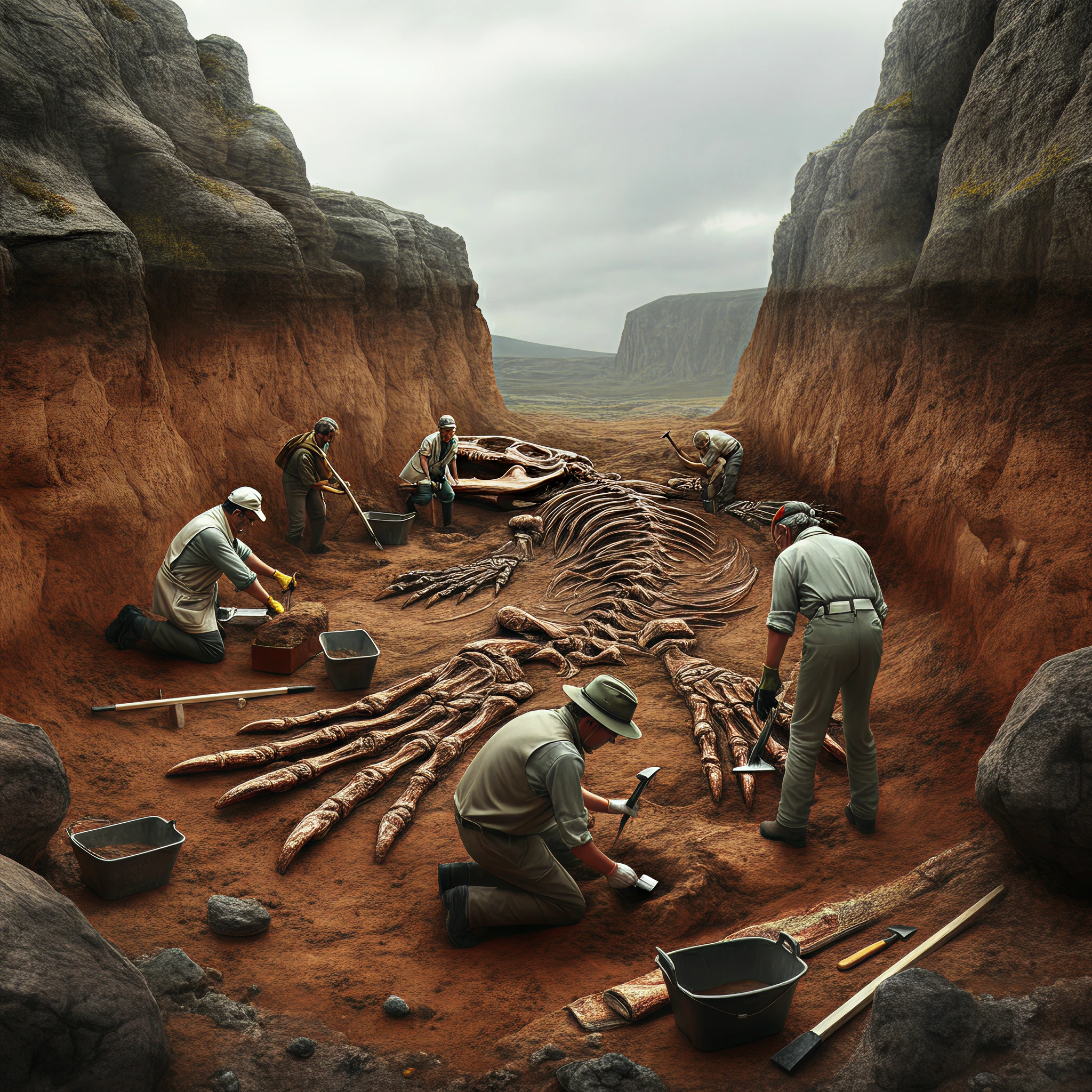A groundbreaking discovery from the ancient Burgess Shale fossil deposits in Canada has unveiled a 506-million-year-old predator, Mosura fentoni. This diminutive yet fascinating creature, found by paleontologists from the Manitoba Museum and Royal Ontario Museum (ROM), provides new insights into the evolution of arthropods, a group of animals that includes insects, spiders, and crustaceans.
A Unique Predator from the Depths of Time
At first glance, Mosura fentoni may not appear too intimidating. It was only the size of an index finger, but its unique combination of physical features establishes it as a captivating example of adaptation in prehistoric life. Equipped with three eyes, spiny jointed claws perfect for snaring prey, and a circular, tooth-lined mouth, Mosura fentoni was a formidable predator of its time.
Its body was lined with swimming flaps for streamlined movement, allowing it to glide effortlessly through the Cambrian seas. However, what truly set Mosura fentoni apart was its abdomen-like structure composed of 16 tightly-packed segments, each lined with gills. Such a feature, not observed in other members of its extinct radiodont group, hints at possible evolutionary adaptations for more efficient respiration.
Evolutionary Importance in Arthropod History
Radiodonts, which included larger, well-known predators like Anomalocaris canadensis, represent the earliest branch of the arthropod evolutionary tree. Their fossilized remains have been instrumental in understanding the development of ancestral traits in arthropods.
According to Dr. Joe Moysiuk, Curator of Paleontology and Geology at the Manitoba Museum, the segmented abdomen of Mosura fentoni bears a fascinating resemblance to modern arthropods such as horseshoe crabs, woodlice, and insects, which often feature rear-segmented respiratory organs. This example of evolutionary convergence demonstrates how some solutions to environmental challenges have recurred multiple times across different species.
Jean-Bernard Caron, Curator of Invertebrate Paleontology at ROM, highlighted the implications of this discovery, saying, “Mosura fentoni reminds us that early arthropods were surprisingly diverse and displayed traits we see echoed in their modern relatives.”
The “Sea-Moth”
Dubbed the “sea-moth” by field collectors because of its vague resemblance to moths when observed underwater, Mosura fentoni’s scientific name pays homage to “Mothra,” the famous Japanese kaiju. However, this creature is only distantly related to modern moths and occupies a much deeper, older branch of the evolutionary tree.
A Glimpse into Internal Anatomy
The fossilized specimens of Mosura fentoni offer a rare opportunity to examine the internal anatomy of an ancient predator. Through advanced paleontological imaging, researchers were able to observe elements of its circulatory, nervous, and digestive systems. Notably, Mosura fentoni had an open circulatory system, with its heart pumping blood into large body cavities known as lacunae. These structures are preserved as reflective patches within the fossils.
“Mosura’s preserved lacunae confirm the ancient origin of this type of circulatory system,” Moysiuk explained. The fossils reveal detailed traces of nerves once connected to the creature’s eyes, pointing to image-processing capabilities akin to those of living arthropods.
Uncovering Hidden Treasures in the Burgess Shale
Of the 61 known fossils of Mosura fentoni, most were unearthed by ROM between 1975 and 2022, with many originating from Yoho National Park’s Raymond Quarry in British Columbia. Additional fossils were found in Marble Canyon, a newer excavation area in Kootenay National Park. Some specimens even date back to collections from Charles Walcott, who first discovered the Burgess Shale in 1909.
These fossils, along with others from the Burgess Shale, demonstrate the exceptional preservation of ancient life forms. The deposits continue to be a treasure trove for researchers, offering insights into soft tissue structures from over half a billion years ago.
The Greater Implications
Paleontological discoveries like Mosura fentoni not only add to our understanding of evolutionary biology but also serve as a reminder of how much remains to be uncovered about Earth’s distant past. The creature’s unique features contribute to an ongoing narrative of adaptation, highlighting how early life on Earth developed innovative solutions to survive.
Visitors interested in viewing Mosura fentoni and other radiodont fossils can explore exhibits at both the Royal Ontario Museum in Toronto and the Manitoba Museum in Winnipeg. Additionally, guided tours of the Burgess Shale sites, run by Parks Canada, offer an incredible opportunity to experience one of the most significant fossil sites in the world.
Would you like to explore even more curious facts about ancient creatures like Mosura fentoni? Stay tuned for updates from the world of paleontology as we continue to uncover the secrets of Earth’s early life.
Images
Below are some curated visuals that bring Mosura fentoni to life for readers:
- Visual Reconstruction
Artist’s depiction of Mosura fentoni swimming through Cambrian seas.
Credit: Danielle Dufault, ROM
!Reconstruction of Mosura fentoni
- Fossil Specimen 1
Photographed specimen of Mosura fentoni showing segmented abdominal regions and preserved internal structures.
Credit: Jean-Bernard Caron, ROM
- Field Discovery
Dr. Joe Moysiuk examining a Mosura fentoni specimen in the Burgess Shale quarry.
Credit: Melina Jobbins
- Anatomical View
Diagram featuring the preserved nervous, circulatory, and digestive systems of Mosura fentoni.
Credit: Danielle Dufault, ROM
With every fossil unearthed, the Burgess Shale continues to deepen our understanding of the evolution of life on Earth. And Mosura fentoni, with its unique combination of features and evolutionary significance, is not just another find, but a window into a world long lost to time.








